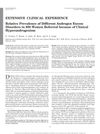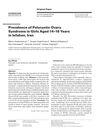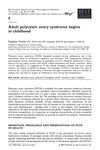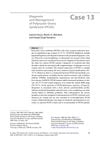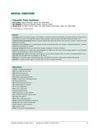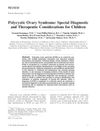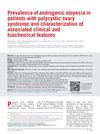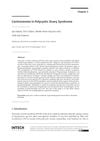The Frequency of Various Phenotypes of Polycystic Ovarian Syndrome in Adolescents, Based on Rotterdam Criteria
July 2015
in “
International Journal of School Health
”
TLDR The most common PCOS type in adolescents is hyperandrogenic with polycystic ovaries.
This study investigated the prevalence of different PCOS phenotypes among 3190 female adolescents aged 14 to 18 in Shiraz, with 146 participants ultimately diagnosed with PCOS. The most common phenotype was hyperandrogenic with polycystic ovary syndrome (30.8%), while the full-blown phenotype, including hyperandrogenism, oligomenorrhea, and polycystic ovary syndrome, was the least frequent (14.5%). The study highlighted the significant presence of symptoms like hirsutism, acne, and alopecia, and emphasized the need for further research due to the psychological and hormonal impacts of PCOS on adolescents.

